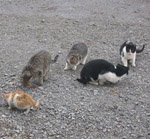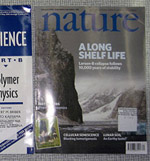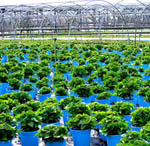The non-target impacts of pesticides on insect communities
 Agriculture,
Agriculture,  Biodiversity,
Biodiversity,  Invertebrates
Invertebrates  A ladybug standing on a leaf. Image credit, Jon Sullivan.A new study finds that using pesticides in agriculture can have major unintended negative consequences for insect communities including beneficial species.
A ladybug standing on a leaf. Image credit, Jon Sullivan.A new study finds that using pesticides in agriculture can have major unintended negative consequences for insect communities including beneficial species.
Michael Nash and fellow researchers from the University of Melbourne looked at the impacts on entire insect communities from a season-long application of pesticides across 61 Australian vineyards. For each vineyard plot, they calculated a metric of the cumulative toxicity of the pesticides that were applied and conducted a comprehensive insect survey.
Even though only fungicides and non broad-spectrum insecticides were used, the study found that at higher cumulative toxicity, a wide variety of non-target native insects decreased including spiders, ladybirds (aka ladybugs in North America), and beetles know to prey on pest species like mealybugs and aphids. The study attributed most of the negative impacts to the insecticide indoxacarb and sulphur, applied as a fungicide.
In addition, at higher pesticide levels the study found an increase in the non-native millipede (Ommatoiulus moreletti) that invades houses and damages vegetable gardens. This is consistet with past research finding a link between pesticide use and an increase in some invasive insects.
By looking at pesticides in a real world agricultural setting, the study was able to see impacts that likely would have eluded laboratory testing. The authors write,
"There is a diverse range of sublethal effects of pesticides often not assessed in standardized laboratory based tests; these include decreased fecundity, reduced fertility and offspring viability, changes in sex ratio and behavior as well as dispersal. Such non lethal effects can influence arthropod communities in quite unpredictable ways when there are interactions among species. The impact of pesticides is further complicated by the potential for cumulative effects of multiple applications across a season."
The study may also help land mangers better understand these non-target impacts. For each vineyard plot, the study calculated a cumulative metric based on the defined toxicity ranking for each pesticide being applied and the frequency of use. For land managers in general, this type of cumulative toxicity metric could potentially be used to better understand how different combinations and frequencies of pesticide applications may affect insect communities across agricultural and natural systems.
--Reviewed by Rob Goldstein
Nash, M., Hoffmann, A., & Thomson, L. (2010). Identifying signatures of pesticide applications on indigenous and invasive non-target arthropod communities from vineyards Ecological Applications DOI: 10.1890/09-1065




Reader Comments